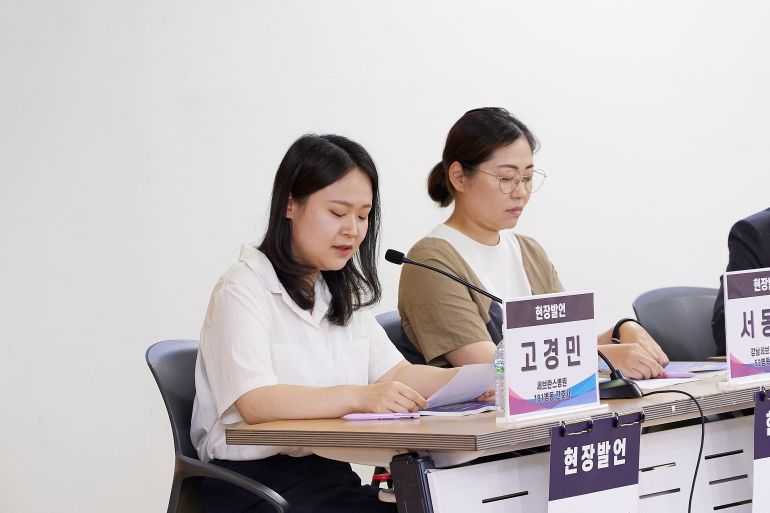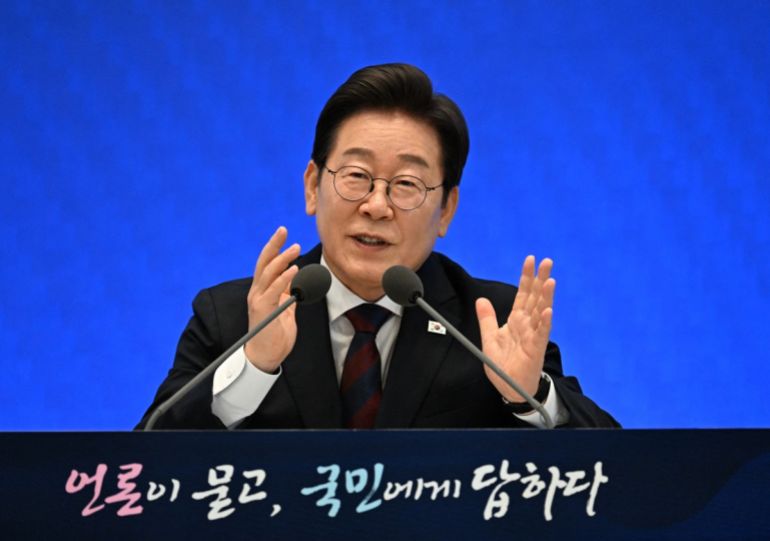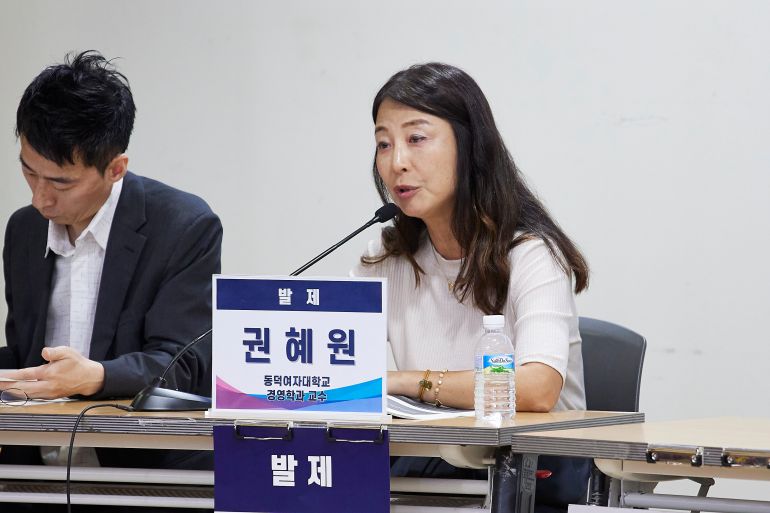South Korea trials 4-day weeks and half-days for its stressed-out workers | Business and Economy News
Seoul, South Korea – Go Kyoung-min, 34, a nurse at Severance Hospital in Seoul, found a new sense of balance in her life during the first half of this year.
As the mother of twin daughters born in 2021, Go often felt guilty about not spending enough time with her children because of work.
Recommended Stories
list of 4 itemsend of list
But after opting into the four-day workweek offered by her workplace, Go was able to spend more time with her family, attending daycare events she had previously missed and relying less on her in-laws for childcare.
Severance is the first hospital in South Korea to trial a four-day workweek, aiming to improve the work-life balance of its staff.
Under the program, introduced in 2023 following an agreement between labour and management, some hospital employees are allowed to take three days off per week in exchange for a 10 percent reduction in salary.
Staff take turns participating in six-month rotations, after which they return to a five-day week.
The program appears to have improved nurses’ health and wellbeing, enhanced the quality of medical services, boosted organisational efficiency, and reduced turnover rates, the Korea Worker Institute-Union Center said in a report about the trial released last month.
According to the report, turnover among participating nurses with less than three years’ experience fell from 19.5 percent to 7 percent.
Average sick leave per employee also fell by one day during the trial, while it increased by 0.7 days in wards on five-day weeks.
Go said the four-day workweek not only improved her work-life balance but helped her be more focused and kinder to her patients.
“I work in the pancreatobiliary ward, where many patients face critical situations. This makes the workload heavier. With a four-day workweek, I feel I can take more time to listen to patients and care for them with greater responsibility,” she told Al Jazeera.
“My children used to be happy when their grandparents picked them up from daycare, taking it for granted. But once I did it more often, they expected me to be there.”

Go’s experience is unusual in South Korea, a country notorious for its long working hours, where staying late is often seen as a mark of a good employee.
South Korean workers logged an average of 1,865 hours in 2024, according to the Organisation for Economic Co-operation and Development (OECD), the sixth-highest among developed countries and well above the OECD average of 1,736 hours.
They worked 248 hours more than their counterparts in neighbouring Japan.
While long workdays are still the norm, shorter work arrangements are gradually spreading in the private sector.
Some companies, particularly IT firms and startups, have been experimenting with four-day or four-and-a-half-day workweeks for several years.
South Korea’s major conglomerates have also shown interest in more flexible work arrangements, with Samsung Electronics, SK Group, and Kakao introducing programmes offering employees periodic breaks of a full or half-day.
Lee Jae-ho, 42, a father of two who works at sports and health technology company Kakao VX, has benefitted from one such program, getting one Friday off each month and working 1.5 hours less on the remaining Fridays.
Lee said working fewer days does not necessarily reduce efficiency.
“When I have a Friday off or shorter hours, I adjust my schedule in advance, so the reduced workdays have little impact on productivity,” Lee told Al Jazeera.
“I have more time to have dinner with my family, recharge, and pursue my hobbies and growth.”
The push to reform South Korea’s work culture has gained momentum since the election of left-leaning President Lee Jae-myung in June.
During his campaign, Lee pledged to cut working hours below the OECD average by 2030 and introduce a four-and-a-half-day workweek.
At a July news conference, Lee reiterated that South Koreans needed to work less, suggesting that a system of long hours with low productivity was unsustainable.
“We have competed more on quantity than on quality,” Lee said.

Cafe24, South Korea’s leading e-commerce solutions provider, implemented a full four-day workweek in July, after previously offering workers every other Friday off, while maintaining employees’ salaries and overall hours.
In June, Gyeonggi Province, which surrounds Seoul, launched the country’s first pilot project of a four-and-a-half-day workweek without wage cuts among local governments, set to run until 2027.
The programme, running until 2027, encourages small and midsize businesses and public institutions in the province to experiment with reduced working hours by providing financial support to cover the increased labour costs.
Some experts and business leaders have expressed concerns about the moves to cut the working week.
Kwon Young-sik, director of human resources at Yonsei University Health System, the parent organisation of Severance, has said permanently shifting to a four-day workweek would cost about 100 million won ($720) per ward in labour costs alone.
“Over the past three years, about 1.2 billion won has been spent on labour costs,” Kwon said last month at an event where Severance’s labour union presented the results of the pilot programme.

At the same event, Lee Kang-young, general director of Severance, said institutional and financial support would be “absolutely necessary” for a four-day workweek to be sustainable.
Park Nam-gyoo, a business professor at Seoul National University, said he would be concerned about productivity and disparities in the labour market if a four-and-a-half-day workweek became the norm.
“South Korea is an export-led economy. It faces an uncertain future if it fails to remain competitive globally,” Park told Al Jazeera.
He said the country needed to consider its low birthrate, sluggish economy, and challenges to its global competitiveness.
But workers like Go and Lee hope more people can experience the benefits they have enjoyed.
“There were absolutely no drawbacks. The only downside in my case was that, as it is a pilot programme, only a few could participate, so I feel sorry for my colleagues who couldn’t. Other than that, it ran smoothly without any operational issues,” Go said.
“Just as the five-day workweek was initially met with concern but eventually settled in, a four-day workweek is expected to gradually bring positive changes to society,” Lee said.
